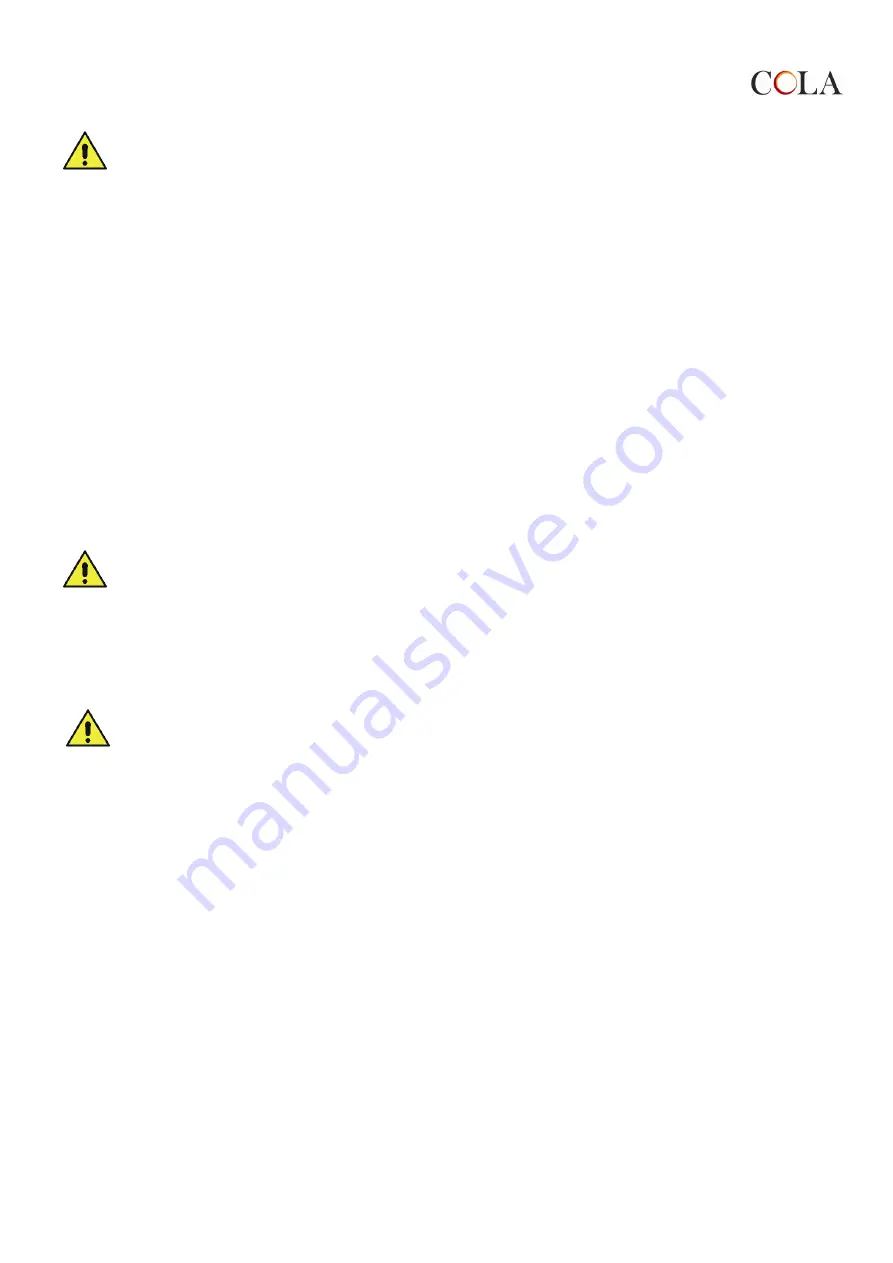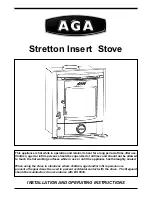
10
Mini Johanna
The oven must only be used for its intended purpose, i.e. for cooking food; any other use is improper and
potentially dangerous .
3.9 Idle period and summer
In summer, it is advisable to clean the combustion chamber, ash pan, fume ducts in the oven, the chimney and flue;
also, remove all residuals on the inside and outside of the stove, check all seals and replace if necessary.
The appearance of the hotplate and other cast iron parts can be preserved by using neutral vaseline.
At the end of maintenance operations, close the doors and air controls to prevent the dust, etc., from entering.
If the stove is not going to be used for a long period, after the above operations and disconnecting from the flue it is
advisable cover it with a protective cloth and store in a safe and protected place.
4 – ROUTINE STOVE CLEANING AND MAINTENANCE
Good maintenance will help improve stove operation, efficiency and service life.
Every day, before lighting the fire, remove any unburnt residuals on the grate and the ashes in the ash pan zone.
4.1 Removing the ash
The MINI JOHANNA stove has a removable grate which should be cleared of ash, using the poker supplied, every time
before loading fuel.
Make sure to periodically empty the ash pan, since the accumulation of ash under the grate hinders the flow of
combustion air. Otherwise the grate will overheat and may become damaged
.
To prevent the risk of fire, allow the ashes to cool outdoors in a metal container or in the stove and eliminate
them in compliance with current local regulations.
4.2 Cleaning the glass
The glass can be cleaned using a damp cloth and normal non-abrasive detergents.
Remove any encrustations with suitable detergents, before they become dry.
The ceramic glass can withstand temperatures of around 750°C : in case of breakage, it is advisable to replace it with
another original glass supplied by Cola.
The glass must only be cleaned when the stove is cold.
4.3 Stove cladding maintenance
Clean the cladding only when the stove is cold. The ceramics are handicraft production and therefore may have minor
surface imperfections such as tiny spots or slight colour differences.
It is advisable to use a soft dry cloth to clean the ceramic surfaces; the use of detergents could highlight any
imperfections.
4.4 Cleaning the cast iron hotplate
Before lighting the stove for the first time, make sure to clean the hotplate with an absorbent cloth in order to remove
the protective grease.
Before first use and after cleaning, the hotplate should be preheated for about half an hour with the oven door open and
the damper lever in position A.
For regular cleaning of the cast iron part of the hotplate, it is advisable to use slightly abrasive materials (e.g. sandpaper
or steel wool), rubbing in the direction of the surface finish. At the end of the season it is advisable to apply a film of
olive oil or neutral vaseline on the cast iron hotplate to protect it.
4.5 Cleaning the oven
It is advisable to clean the oven when half-cold or cold and every time after it is used, in order to prevent grime forming
on the surfaces.
To clean the stainless steel surfaces of the oven, use a non-abrasive detergent with a soft cloth, rinsing thoroughly to
remove all traces of detergent which could otherwise contaminate food or cause corrosion.
To clean the baffle located under the oven, open the stove oven door, remove the steel plate and clean.
































